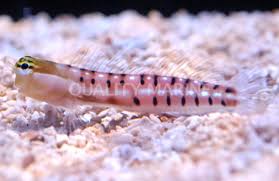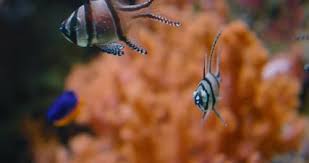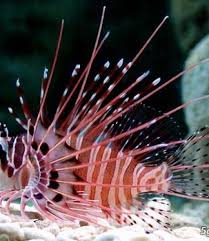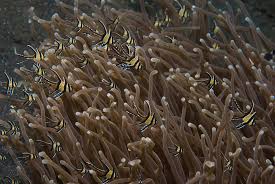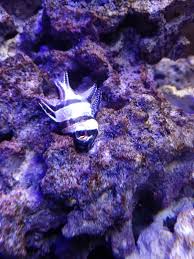The dragon (lóng, 龙) has been one of the most powerful and revered symbols in Chinese culture for thousands of years. From imperial robes to festival costumes, the image of the dragon is woven into the very fabric of Chinese fashion. As a representation of power, wisdom, and divine protection, dragons have played a significant role in the design and symbolism of traditional Chinese clothing.
This article explores the historical significance of dragons in Chinese attire, their presence in different dynastic fashion trends, and their continued influence on modern Chinese clothing.
1. The Symbolism of Dragons in Chinese Fashion
1.1. The Dragon as an Imperial and Celestial Symbol
In Chinese mythology, dragons are celestial beings associated with:
- The Emperor and the ruling class
- The heavens, cosmic balance, and divine protection
- Prosperity, power, and longevity
The Five-Clawed Dragon (五爪龙, Wǔ Zhǎ Lóng) was an exclusive symbol of the emperor, distinguishing his status as the “Son of Heaven” (天子, Tiānzǐ). Other dragon motifs, such as four-clawed dragons, were reserved for nobles and high-ranking officials.
1.2. The Dragon in Taoist and Feng Shui Beliefs
Dragons are also associated with the Five Elements (五行, Wǔxíng) in Taoist philosophy:
- Wood (木) – Symbolizes growth and vitality
- Fire (火) – Represents energy and power
- Earth (土) – Embodies stability and protection
- Metal (金) – Signifies strength and authority
- Water (水) – Reflects wisdom and adaptability
In clothing design, these elements influenced the colors, embroidery, and fabric choices for dragon motifs.
2. The Evolution of Dragon Motifs in Traditional Chinese Clothing
2.1. Han Dynasty (206 BCE – 220 CE): The Early Dragon Influence
The Han Dynasty saw the earliest depictions of dragons in Chinese attire. While clothing styles were relatively simple, silk embroidery featuring dragon designs became a symbol of protection and status.
- Dragon robes were worn by high-ranking officials and the imperial family.
- Bronze and jade belt ornaments often featured dragon motifs.
- Taoist priests wore dragon-embroidered robes to signify spiritual power.
2.2. Tang Dynasty (618 – 907): The Golden Age of Dragon Fashion
During the Tang Dynasty, Chinese clothing became more elaborate, influenced by Central Asian and Persian designs. The depiction of dragons in fashion evolved:
- Gold-threaded dragon embroidery became common in royal garments.
- Dragons were often paired with phoenixes to represent the emperor and empress.
- Dragon-patterned silk robes were worn during important ceremonies.
The dragon’s presence in fashion during this period reflected China’s prosperity, openness to foreign influences, and artistic refinement.
2.3. Song Dynasty (960 – 1279): Dragons in Scholar and Military Attire
The Song Dynasty emphasized Confucian ideals, leading to:
- More structured, modest clothing designs with subtle dragon patterns.
- Military uniforms featuring dragons, symbolizing bravery and authority.
- Scholars and poets wearing dragon-embroidered robes, reflecting their intellectual status.
Unlike the flamboyant designs of the Tang Dynasty, Song Dynasty dragon motifs were simpler yet elegant, emphasizing balance and harmony.
2.4. Yuan Dynasty (1271 – 1368): Mongol Influence on Dragon Motifs
Under Mongol rule, dragon imagery in clothing became more aggressive and bold. Key developments included:
- Large, fierce dragon designs symbolizing military strength.
- Dark-colored dragon robes, representing the Mongol warrior spirit.
- Heavier fabrics like brocade and velvet for colder climates.
2.5. Ming Dynasty (1368 – 1644): The Rise of the Dragon Robe (龙袍, Lóngpáo)
The Ming Dynasty saw the formalization of the dragon robe for emperors and officials. Key features included:
- Bright yellow silk fabric, reserved for the emperor.
- Nine dragons embroidered on the robe, symbolizing ultimate power.
- Circular dragon medallions, emphasizing cosmic harmony.
The dragon robe became an official part of the imperial dress code, reinforcing the emperor’s divine authority.
2.6. Qing Dynasty (1644 – 1912): The Peak of Dragon Robe Artistry
The Qing Dynasty, ruled by the Manchu, elevated the dragon robe to new levels of complexity. Key characteristics included:
- Five-clawed dragons exclusively for the emperor
- Multicolored dragon embroidery, incorporating shades of blue, red, and gold
- Wave and cloud patterns, representing the dragon’s dominion over nature
During this period, dragon motifs extended beyond imperial robes to court officials, noblewomen, and military generals.
3. The Role of Dragons in Different Types of Traditional Chinese Clothing
3.1. The Dragon Robe (龙袍, Lóngpáo)
The most prestigious form of dragon-embroidered clothing, worn only by the emperor and his court. The arrangement of dragons on the robe indicated rank and authority.
3.2. Dragon Motifs in Women’s Attire
While dragons were primarily associated with masculine power, empresses and noblewomen also wore dragon designs. These were often:
- Paired with phoenix motifs to symbolize yin-yang balance.
- Woven into wedding dresses as a sign of marital harmony.
- Used in silk shawls and headdresses for auspicious occasions.
3.3. Dragons in Festival and Opera Costumes
Dragons also played an important role in Chinese opera costumes and festival attire. The dragon dance costume is one of the most famous examples, featuring:
- Bright red and gold embroidery, symbolizing prosperity.
- Flame-like patterns, representing the dragon’s power.
- Flowing silk fabric, enhancing the fluidity of movement.
These designs remain popular in Chinese New Year celebrations and cultural performances worldwide.
4. Dragons in Modern Chinese Fashion and Global Influence
4.1. Revival of Dragon Motifs in Modern Fashion
In recent years, Chinese designers have reintroduced traditional dragon patterns into contemporary clothing, including:
- Cheongsams (旗袍, Qípáo) with embroidered dragon details.
- High-fashion gowns featuring modernized dragon designs.
- Dragon-inspired streetwear, blending tradition with modern aesthetics.
4.2. Dragons in International Fashion
The global fashion industry has also embraced dragon motifs, particularly in:
- Haute couture designs by luxury brands such as Gucci and Versace.
- Martial arts uniforms, incorporating Chinese dragon symbolism.
- Tattoo and streetwear culture, influenced by traditional Chinese art.
Despite modernization, the dragon remains an iconic symbol in fashion, representing power, heritage, and artistic excellence.
Conclusion: The Timeless Legacy of Dragons in Chinese Clothing
From imperial robes to modern couture, dragons have played an enduring role in Chinese fashion history. Their presence in traditional clothing reflects dynastic power, philosophical beliefs, and artistic evolution. Even in today’s rapidly changing fashion landscape, the dragon continues to be a symbol of cultural pride and identity.
As Chinese fashion continues to evolve, the legacy of the dragon remains as powerful as ever—an eternal symbol of strength, wisdom, and elegance in clothing design.






